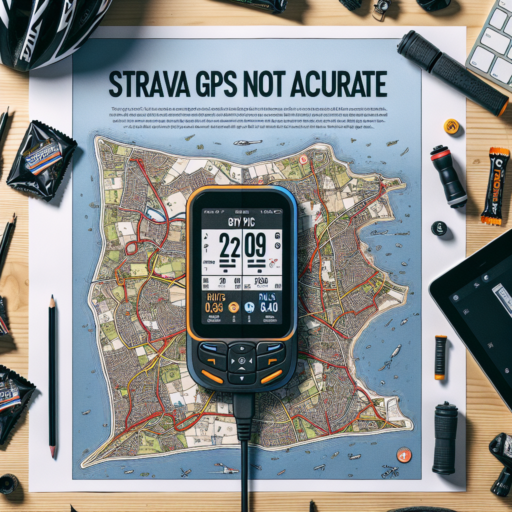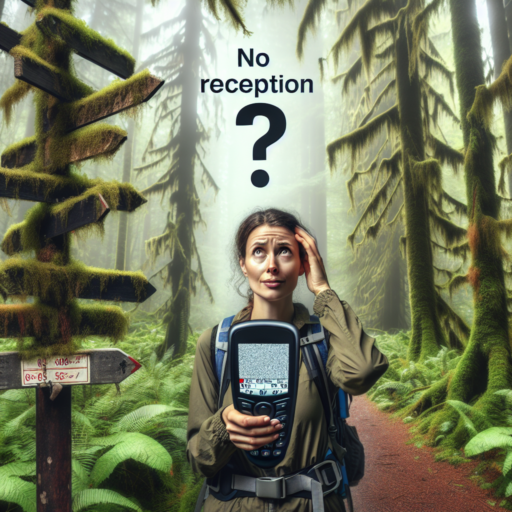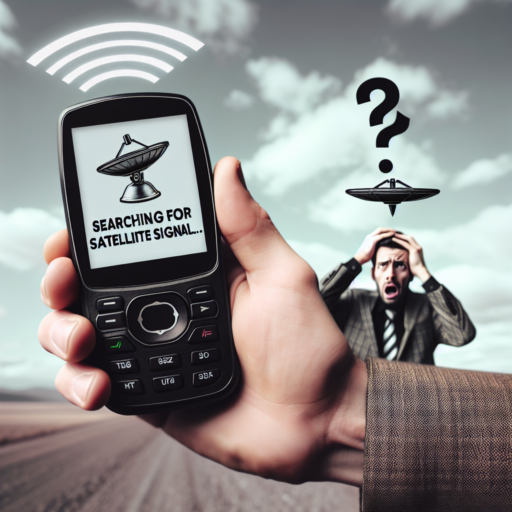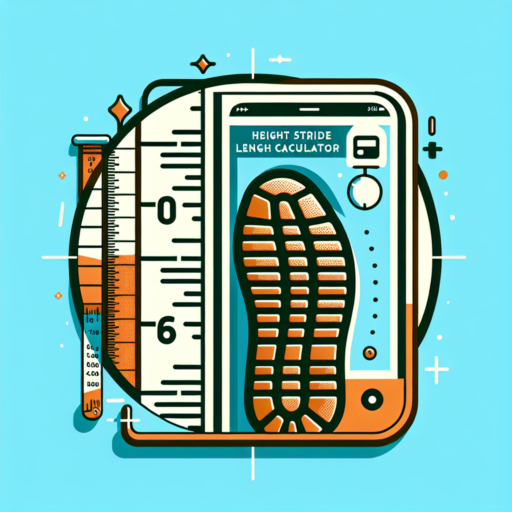Common Reasons Why Your Strava GPS Is Not Accurate
When it comes to tracking your fitness activities, Strava is a popular app beloved by athletes and fitness enthusiasts alike. However, users often encounter issues with GPS accuracy, which can be frustrating. Understanding the common reasons behind these inaccuracies can help you find solutions and improve your tracking experience.
Lack of Clear Sky Visibility
The accuracy of your Strava GPS heavily depends on the direct line of sight to GPS satellites. Tall buildings, dense forests, or even heavy cloud cover can interfere with signal strength. When your device struggles to connect with enough satellites, the accuracy of your location data can suffer, leading to oddities in your activity map or incorrect distance measurements.
Device-Specific GPS Limitations
Different devices come with varying levels of GPS sensitivity and accuracy. Some smartphones or GPS-enabled fitness watches may not be equipped with the high-quality components needed to maintain a strong and steady GPS signal. This difference in hardware can result in significant discrepancies in the route details and distance logged on your Strava account. It’s important to consider the specifications of your device and, if necessary, invest in one known for superior GPS performance.
GPS Drift
GPS drift occurs when your GPS signal intermittently loses accuracy, causing your activity path to appear as if it’s wandering. Factors contributing to GPS drift include the urban canyon effect, where signals bounce off tall buildings, or interference from atmospheric conditions. Though most GPS devices employ algorithms to minimize this drift, it can still impact the overall accuracy of your Strava activities, especially in densely populated urban areas.
How to Improve Strava GPS Accuracy on Your Smartphone
Improving the GPS accuracy of Strava on your smartphone is crucial for athletes and fitness enthusiasts who rely on precise data to track their performance and progress. Several factors can affect GPS accuracy, including device settings, environmental conditions, and the specific app configurations. By fine-tuning these elements, you can ensure that every mile you log is as accurate as possible.
Update Your Device and Strava App Regularly
One of the simplest yet often overlooked steps to enhance GPS accuracy is ensuring that both your smartphone and the Strava app are up to date. Developers regularly release updates that not only add new features but also improve the app’s ability to interact with your device’s hardware for more precise location tracking. Regular updates can resolve any glitches or bugs affecting GPS precision.
Optimize Your Phone’s Location Services
Optimizing your phone’s location services settings is another crucial step in improving GPS accuracy. For Android users, enabling the «High Accuracy» mode in location settings can make a significant difference. iOS users should ensure that location services are set to «While Using the App», which allows Strava to access GPS data optimally. Additionally, avoid battery-saving modes while using Strava, as these can limit the app’s access to your device’s GPS module, thus compromising the accuracy of your location data.
Ensure a Clear Line of Sight to the Sky
GPS accuracy is heavily dependent on your device’s ability to communicate with satellites. Therefore, ensuring a clear line of sight to the sky when using Strava can greatly enhance location accuracy. Avoid starting your activities in areas with dense buildings, trees, or other obstructions that can interfere with the signal. If you’re starting an activity indoors, wait a few moments outside before you begin to give your device time to acquire a strong GPS signal.
No se han encontrado productos.
Troubleshooting Tips for Strava GPS Inaccuracies
Experiencing inaccuracies in your Strava GPS data can be frustrating, especially for athletes who rely on precise metrics to monitor their training progress. However, several troubleshooting steps can help mitigate these issues and improve the accuracy of your GPS tracking. Here’s a closer look at practices you might consider.
Ensure Your Device’s GPS is Calibrated
One of the primary steps in addressing GPS inaccuracies is ensuring your device is properly calibrated. Whether you’re using a smartphone or a dedicated GPS device, calibration can significantly influence the accuracy of your data. For smartphone users, engage in activities that encourage GPS calibration, such as outdoor walks, while ensuring your location services are turned on and set to the highest accuracy mode. For dedicated GPS devices, refer to the manufacturer’s instructions for calibration procedures.
Check for Software Updates Regularly
Software updates often include improvements to GPS functionality and performance enhancements that can rectify existing inaccuracies. Whether your device is a smartphone or a GPS watch, keeping its software up to date is crucial. These updates can fix known bugs and enhance the overall reliability of your GPS data, so always check for the latest firmware version and install any pending updates.
Avoid Starting Your Activity in Poor GPS Conditions
Starting your activity under inadequate GPS conditions, such as in areas with high buildings, dense forests, or near large bodies of water, can lead to immediate inaccuracies. These environments can interfere with the GPS signal, making it difficult for your device to establish a stable connection. To counteract this, try to start your activity in an open area where the device can easily connect to GPS satellites. Wait a few moments until your device confirms a strong GPS signal before commencing your exercise.
Understanding How GPS Works with Strava for Better Accuracy
Strava, as a leading fitness tracking app, relies profoundly on the precision of GPS technology to provide its users with detailed stats about their physical activities. However, to unlock this app’s full potential and ensure the utmost accuracy in tracking, comprehending how GPS operates in tandem with Strava is crucial. GPS, or Global Positioning System, is a network of about 30 satellites orbiting the Earth, which helps in determining the location, speed, and direction of any GPS receiver—like the one in your smartphone used by Strava.
When you use Strava for your workouts, the app communicates with these satellites to pinpoint your exact location on the globe. This technological interplay is what allows Strava to track your running routes, cycling paths, or any outdoor activity with remarkable precision. However, several factors can influence the accuracy of your GPS data. These include the quality of your device’s GPS receiver, the surrounding environment (such as urban canyons, dense forests, or valleys), and even atmospheric conditions. Understanding these elements can help users troubleshoot and improve the accuracy of their Strava tracking.
The frequency and quality of the GPS signals received also play a pivotal role in data accuracy. Strava empowers users by offering settings that can enhance the recording accuracy, such as the High Accuracy Mode on many smartphones. Additionally, for enthusiasts looking to further refine their data, external GPS devices can be synchronized with Strava, leveraging more sophisticated GPS chips to offer an even higher level of precision. Acknowledging these nuances and adjusting your setup accordingly can dramatically enhance your Strava experience, enabling a more detailed and accurate capture of your athletic endeavors.Comparing Strava GPS Accuracy Across Different Devices
When it comes to tracking your runs, rides, or any outdoor activity, the accuracy of the GPS data captured can significantly influence the quality of insights and overall motivation. Strava, a popular fitness tracking app, relies heavily on the device’s GPS capability to provide its users with detailed activity analytics. However, the accuracy of GPS tracking can vary extensively across different devices, making it essential for users to understand how their device compares and performs.
Different factors come into play when it comes to GPS accuracy on Strava across devices. These include the device’s hardware quality, the environment in which the activity is being tracked, and whether the device is relying solely on GPS or supplementing with other technologies like GLONASS or Galileo. High-end smartphones and GPS watches typically offer more consistent and accurate location tracking, translating to more reliable activity data on Strava.
Furthermore, users often notice discrepancies in distance logged when comparing Strava data across multiple devices used simultaneously. This inconsistency can be attributed to the way Strava processes raw GPS data. While Strava does employ algorithms to smooth out GPS inaccuracies, the initial quality of the GPS data is paramount. Thus, devices with superior GPS chips and better signal reception will inherently provide more accurate Strava tracking and metrics.
Top Fixes for Strava GPS Not Showing Correct Distance
When encountering issues with Strava GPS not showing the correct distance, it can be frustrating for athletes who rely heavily on the accuracy of such data for tracking their performance and progress. Fortunately, there are several tried and tested methods to tackle this problem and ensure your Strava app is back to measuring distances correctly.
Check Your Phone’s GPS Settings
First and foremost, verify the GPS settings on your phone. Ensure your location services are enabled specifically for the Strava app. It’s crucial to select the option “Allow all the time” for Strava, as this permits the app to access GPS data even when running in the background. Additionally, turning off any battery saver options can improve the GPS tracking accuracy, as these features often limit GPS functionality to save power.
Update to the Latest Strava Version
Running an outdated version of the Strava app can lead to various performance issues, including inaccurate GPS data. Developers regularly release updates that fix known bugs and enhance overall app functionality. Hence, checking for the latest app version on your respective app store and updating it is a simple yet effective fix. This ensures you benefit from the latest improvements and functionalities designed to offer you a more accurate tracking experience.
Manual Correction of Distance
In some cases, despite trying out the fixes mentioned above, the GPS data might still be inaccurate. Strava provides a feature for manual correction of distance directly within the app. This option allows users to adjust their activity distance to reflect a more accurate measurement. While this is a workaround rather than a fix, it can be particularly useful for making sure your training logs remain consistent.
Improving the accuracy of GPS tracking for Strava involves simple checks and tweaks, from updating the app to adjusting your device’s settings. By ensuring your app and phone are optimally set up, you can get back to tracking your distances accurately and focusing on your fitness goals.
Expert Insights: Optimizing Your Device’s GPS for Strava
Maximizing the accuracy and efficiency of your device’s GPS is crucial for sports enthusiasts and athletes who rely on Strava to track their activities. Strava, a platform beloved for its ability to meticulously record your workouts, routes, and progress, demands optimized GPS functionality to deliver the most accurate data. Understanding the intricacies behind your device’s GPS settings can elevate your Strava experience from good to exceptional.
One crucial step in optimizing your device’s GPS for Strava involves ensuring that your device’s software is up to date. Manufacturers often release updates that enhance the GPS functionality, reducing the chances of inaccuracies in tracking. Moreover, tweaking the ‘High Accuracy’ GPS mode in your device’s location settings can make a significant difference. This mode utilizes a combination of GPS, Wi-Fi, Bluetooth, and mobile networks to pinpoint your location as precisely as possible, ensuring Strava records your activities with the utmost accuracy.
Another essential aspect to consider is the environment in which you use Strava. Urban areas with high buildings or dense forests can obstruct GPS signals, leading to inaccuracies in your activity data. In such scenarios, using accessories like external GPS enhancers or ensuring your device remains in an optimal position, such as an armband for runners or a quad lock for cyclists, can help maintain a strong GPS signal. Furthermore, regularly clearing the cache in your Strava app can prevent data overload, ensuring smoother operation and more accurate GPS tracking.
Real User Experiences: Solutions for Strava GPS Issues
Many avid cyclists and runners turn to Strava for tracking their fitness journeys. However, GPS issues can sometimes detract from the experience, leading to frustration and inaccuracies in workout data. Real user experiences have paved the way for a range of practical solutions to common Strava GPS problems. These shared insights provide invaluable guidance for those looking to enhance their Strava usage.
Optimizing Device Settings for Improved Accuracy
One of the most effective steps users can take is adjusting their device settings. Turning off battery-saving modes and ensuring that Strava is allowed to run in the background have been highlighted as key factors. Additionally, periodically updating the device’s operating system and the Strava app itself can significantly reduce the occurrence of GPS discrepancies, as shared by users who have encountered and overcome these issues.
Understanding the Impact of Your Environment
Environmental factors play a substantial role in the accurate functioning of GPS services. Users have found that areas with tall buildings, dense forests, or even heavy cloud cover can interfere with GPS signals. By planning routes in more open areas or avoiding starting an activity until acquiring a strong GPS signal, Strava users can mitigate some of the most common environmental challenges encountered.
Throughout these real user experiences, the community aspect of Strava comes to the forefront, providing not just a platform for tracking fitness but also a resource for overcoming technical hurdles together. By sharing solutions and tips, Strava users continue to enhance their collective experience, turning potential frustrations into opportunities for improvement.
Pre-Ride and Post-Ride Tips to Ensure Strava GPS Accuracy
Ensuring accurate Strava GPS tracking is crucial for athletes who rely on this technology to monitor and analyze their rides. Proper GPS accuracy not only aids in precise data collection but also enhances the overall riding experience. By implementing a few simple tips before and after each ride, cyclists can significantly improve the reliability of their Strava data.
Pre-Ride Tips for Enhanced GPS Accuracy
- Check Your Device’s GPS Signal: Before setting off, ensure your device has a strong GPS signal. It’s advisable to wait a few minutes outdoors, allowing your device to establish a stable connection with satellites.
- Update Your Strava App and Device Firmware: Running the latest versions of your Strava app and device firmware can solve known issues and improve GPS tracking capabilities.
Post-Ride Tips to Maintain GPS Accuracy
- Sync Your Data Immediately: After completing your ride, sync your data with Strava as soon as possible. This minimizes the chances of data corruption and ensures your activity is accurately logged.
- Analyze Your GPS Data: Regularly review your routes on Strava for any discrepancies. If you notice irregularities, this might indicate a GPS signal issue, prompting a device check or settings adjustment.




